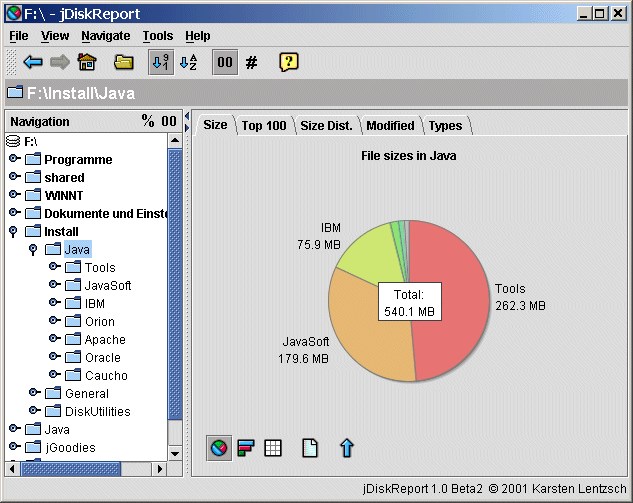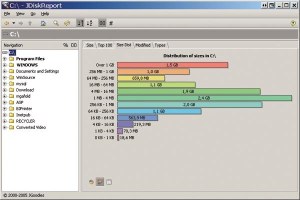

Useful to scan just a single directory and get info about all the subdir and its files.
#JDISKREPORT ALTERNATIVE FULL#
When the scanning process ends up, you will get the full tree of your filesystem, like the one in the previous Figure. With this option you’ll get a nice overview your whole disk. Some of the interesting feature included in this software are: The graphical representation can be switched between a ring chart and a treemap chart so the presentation can be tailored to the specific content being scanned

The interface allows for selection of specific parts of filesystem being scanned so a single folder, the entire filesystem, and even remote folders and filesystems can be scanned. The software gives the user a menu-driven, graphical representation of what is on a disk drive. It was part of gnome-utils, but was split off for GNOME 3.4. I personally use both of these commands a lot of times at work to check file system and/or directory, but I also understand that on a desktop with Linux you could use something more graphical to see the status of your partitions or directories, so today I’ll show you some programs that can achieve this goal: baobab, cdu, ncdu, JDiskReport and Filelight.īaobab recently changed name in Disk Usage Analyser, a bit more generic and less romantic perhaps but now you can’t tell that is not clear what this program do.ĭisk Usage Analyzer is a graphical disk usage analyzer for the GNOME environment. In the past I’ve wrote an article about the commands du and df that can respectively give you information about the Disk Usage and the Disk Free of your Linux computer.


 0 kommentar(er)
0 kommentar(er)
